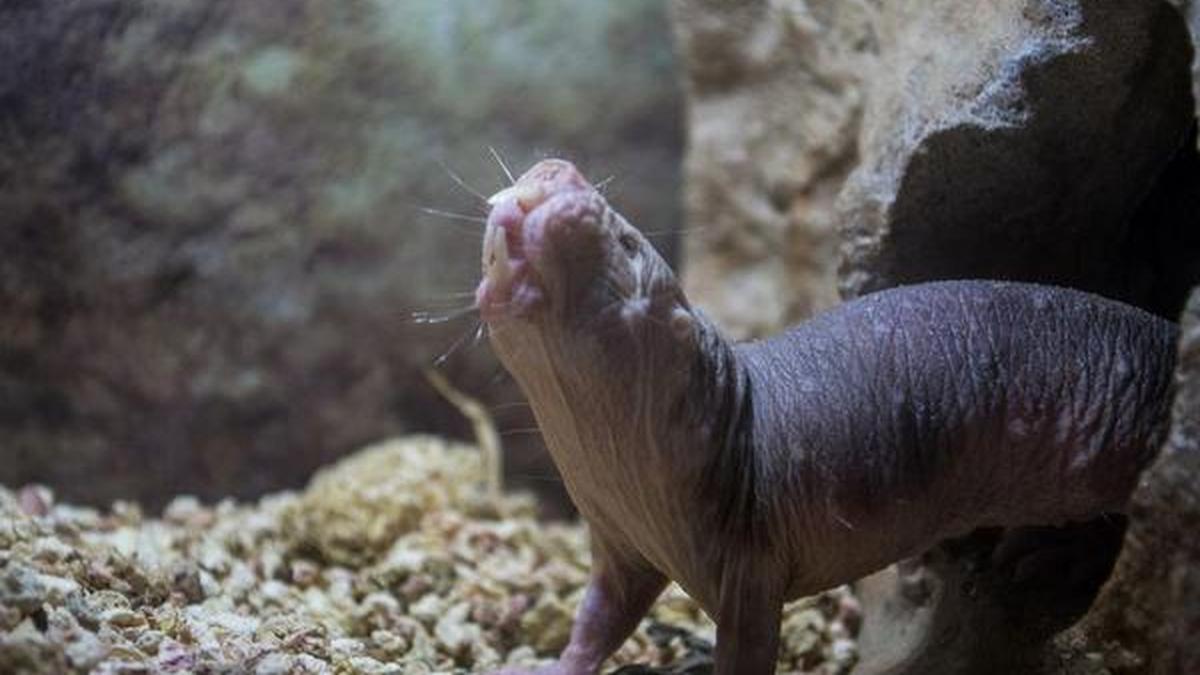The naked mole rat is famous for living nearly 10x longer than other mammals of similar size.
| Photo Credit: Tim Evanson
The naked mole rat (Heterocephalus glaber) is a small, hairless rodent native to East Africa, and famous for living an astonishingly long time, up to around 37 years, nearly 10x longer than mammals of similar size. Scientists have long suspected its remarkable longevity comes from adaptations that keep its DNA intact.
As we age, DNA damage accumulates in our cells. Normally cells repair these breaks using several molecular pathways, but errors or inefficiencies in repair make genomes unstable and lead to ageing and disease.
One molecule known to influence this process is cyclic GMP-AMP synthase (cGAS). In humans and mice, cGAS helps detect foreign DNA, such as that from viruses, and triggers immune responses. However, it also suppresses one of the body’s main DNA-repair systems, called homologous recombination. As a result, human cGAS can actually make cells more prone to ageing and cancer.
Scientists have wondered whether, during evolution, the naked mole rat might have changed cGAS so that it no longer interferes with DNA repair, or maybe even helps it. A new study led by researchers at Tongji University, and recently published in Science, set out to check this idea.
The researchers compared the cGAS genes and proteins of naked mole rats with those of humans and mice. They used genetic engineering tools to switch specific amino acids — the building blocks of proteins — between species and observe the effects on DNA repair. They also performed experiments in cell cultures, fruit flies, and mice to test how these molecular changes affected genome stability, cellular ageing, and lifespan.
Thus the team found that in humans and mice, cGAS interferes with the homologous recombination pathway — but in naked mole rats cGAS enhances it. The reason lay in four amino acid substitutions in cGAS’s structure, which allowed naked mole rat cGAS to remain bound to DNA for longer after damage occurred instead of being quickly removed. This binding prevented cGAS from being tagged for destruction by a process called ubiquitination.
Instead, naked mole rat cGAS brought together two repair proteins, called FANCI and RAD50, to speed up homologous recombination and help fix DNA breaks more efficiently. Cells with this modified cGAS showed fewer signs of stress-induced aging.
When the scientists put the same four amino acid changes into human cGAS, the molecule stopped harming DNA repair.
The discovery is remarkable for showing that longevity can evolve not only by improving helpful repair enzymes but also by weakening harmful regulators. In the naked mole rat, evolution essentially ‘flipped’ the role of cGAS, supporting the long-standing idea that efficient DNA repair is one of the main defenses against ageing.
“Our work provides a molecular basis for how DNA repair is activated to contribute to the exceptional longevity during evolution in naked mole-rats,” the researchers wrote in their paper.
Independent experts have said that if scientists can safely reproduce this effect in other species, including humans, it could open new paths for age-related research and therapies. For example, medicines that adjust how cGAS interacts with DNA might help cells maintain genome integrity without compromising the immune system.
Published – October 13, 2025 06:00 am IST
